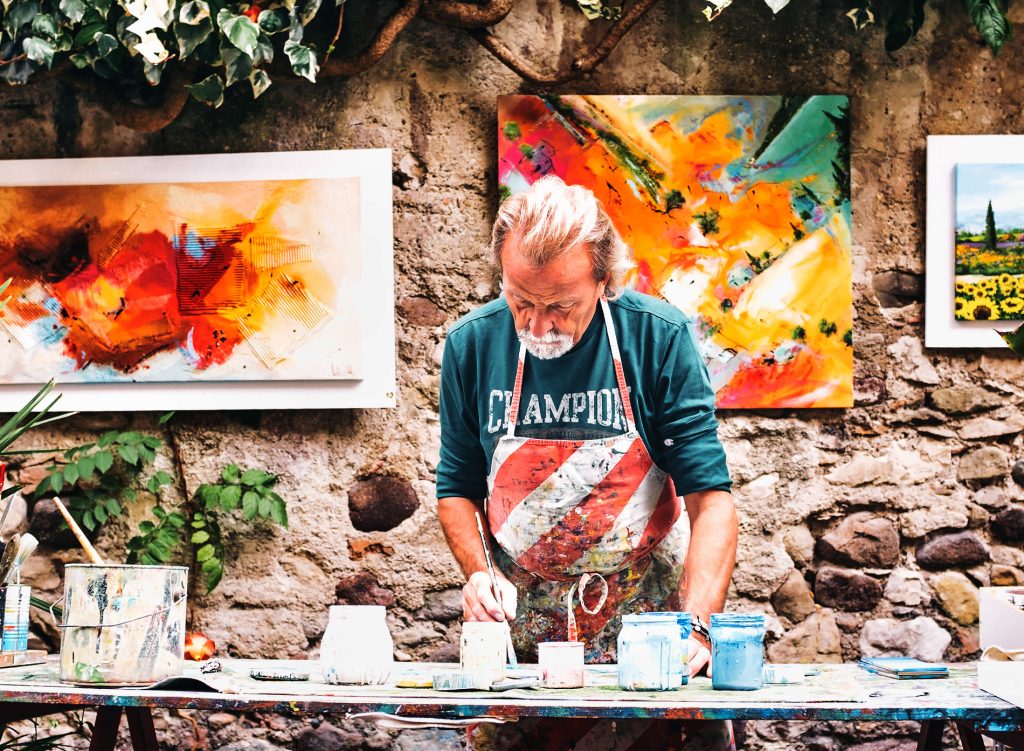There are many different ways to become an artist, and not all of them can lead to big salaries. But you can still make a decent living in one of these fields. For example, animators and character designers can earn decent amounts. However, these careers are generally governed by corporate requirements and less likely to give you complete freedom. Real artists are typically busy with day jobs unrelated to their artistic work. Here are some of the most popular ways to become an artist.
Art is a way to harness your creativity
Art is a wonderful outlet for creative thinking, but many people feel discouraged because they fear not being good enough. The fear of not reaching lofty goals often hinders creativity. While it is possible to achieve lofty goals, the reality is that there will be challenges along the way. One such artist who successfully harnessed his creativity is Salvador Dali. This prominent surrealist was famous for his signature style, which combines vivid imagery with unexpected objects.
To cultivate your own creative flow, you must learn to observe other forms of art. People who spend all their time on their own creative pursuits may not see other forms of art as sources of inspiration. If you’re a landscape painter, study other genres of art. Writers who write fiction should study other genres to expand their creative repertoire. It’s important not to limit yourself to positive emotions, because sometimes negative ones are the most potent.
Many people find making art nerve-wracking. However, art projects can help alleviate these feelings. For example, when people make art, they may experience a “flow state” which is the feeling of complete loss of self awareness. These feelings are known as “in the zone” and are linked to a range of positive effects on health. While a large majority of people feel stressed when creating art, it’s important to be prepared for the possibility that you won’t succeed.

It’s about repetition
You can become an artist by working on a particular theme over again. This technique is known as repetition art. This kind of art appeals to artists and audiences alike because it is everlasting and is bound to repeat itself. Here are 10 artists who use the principle of repetition in their work. One of them is Robert Rauschenberg. He uses it to create his paintings in the same way as Van Gogh and Gauguin.
Repetition is an important aspect of design. It makes a design more coherent and gives it a sense of unity. Repetition also adds visual excitement. Artists like Andy Warhol have proven the power of repetition, and argued that a viewer may be moved by seeing 100 pieces of something that’s similar but different than the first one. Many contemporary artists such as Yayoi Kusama, Damien Hirst, and Keith Haring have used repetition to their advantage.
Repetition in art has been a controversial topic. Some artists claim that repetition kills creativity, but in fact, repetition is crucial to making great works of art. Andy Warhol found his niche by producing a series of prints featuring the same subject over again. This technique became a staple of his work, and he was a renowned Pop artist. The art world has changed a lot since Andy Warhol’s day.
It’s about being willing to try new things
You have to be open to the fact that you aren’t perfect. Success brings with it new problems. You will have to face challenges and accept that you will fail, but this is what will make you a better artist in the end. Artists need to believe in their work and develop resilience. Then they will be able to break free from the traditional artist lifestyle and pursue their dreams.
A good artist knows how to use the right tools for the job. Learning the secrets of a particular technique can lead to better results. Artists should study the works of other artists to understand what they can do better. It’s easier to admit to oneself that you need to work harder than you do to others. So, a good artist should always consider the risk of doing nothing as well as the risk of not being good enough.
It requires business skills
To become an artist, you need to have an active imagination and the desire to create work that has commercial value. Fine artists collaborate on a project, and they sometimes work on different stages of the same piece in succession. Business skills and critical thinking are necessary to transform creative ideas into a commercially viable product. Good communication and project management skills are also required, as is flexibility and persistence. You should also be skilled at manipulating materials and tools.
Performing artists have extensive experience negotiating contracts, speaking with the press, and working on shared projects. However, many of these tasks can be tedious and time-consuming. An artist must prioritize between new work, teaching, and meeting deadlines. Effective management skills can be an asset for both artists and businesspeople. You can utilize the skills you learn in other fields to succeed in your chosen field. By combining your artistic talents and business knowledge, you can maximize your time as an artist.
Artists need good communication skills, since they are often in touch with sponsors and clients. They need to have a strong grasp of design concepts and computer applications to create high-quality pieces of art. Some artists work independently and produce models for projects. They need to develop their own signature style and learn how to market and sell their art. It takes time and money, but in the long run, it’s well worth it.
It requires a website
Social media and other online spaces have become a popular way to promote and sell art. While these platforms are great for sharing your art, they are not yours. If you want to earn clients and sell your work, it’s important to have a website of your own. Having your own website allows you to control the space on which your art is displayed. It also allows you to show potential buyers what you have to offer.
An artist website can function as a digital gallery, business card, gallery flyer, or marketing tool. The purpose of your site will determine how it functions and which CMS is right for your needs. If you plan to sell your work online, you’ll want to create a website that communicates that you are a professional and serious about your art. A website can be anything you want it to be, but it must be designed to reflect your style.
It requires a portfolio
If you want to pursue an art career, it’s important to have a well-rounded portfolio. While the exact number of pieces you need to submit varies from school to school, most schools ask for at least 10 to 20 pieces of your work. These pieces can be anything from finished pieces to works in progress. It’s best to create more pieces than you need, so you can select your strongest pieces later.
Your art portfolio should tell a story and show a progression of your work. You can use multiple mediums to depict one subject, for example, or show the changes in style and mediums over time. The more you change as an artist, the more unique your art is likely to be. You also don’t want to look like you just copied someone else – you’ll lose credibility. Your portfolio should reflect your unique style and make you stand out from other applicants.
The content of your portfolio is equally important. It should feature the most beautiful pieces you’ve created, but it should also reflect the range of your work. Make sure to show the range of your work, as many programs look for a broad spectrum of skills, not a particular style. It is also important to include your workbook pages or sketches, as some programs will require you to submit samples of your work in this medium.

